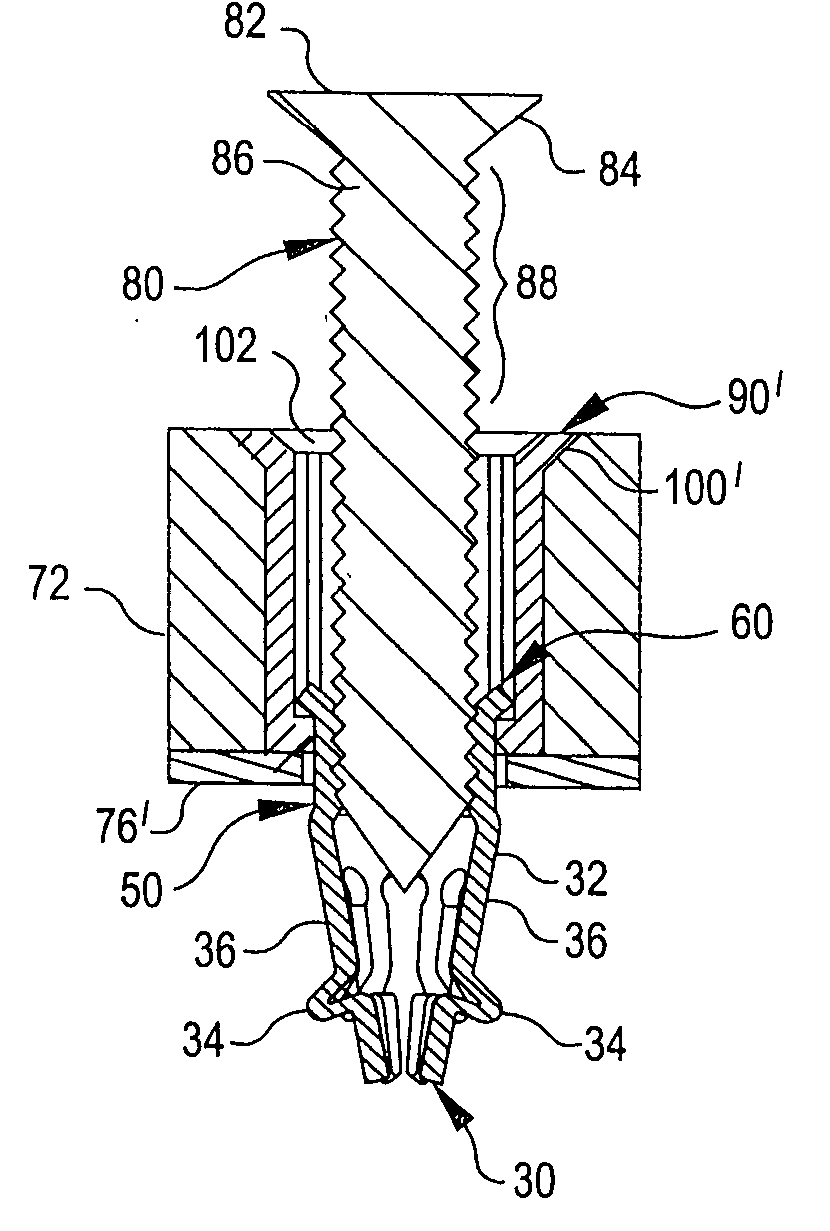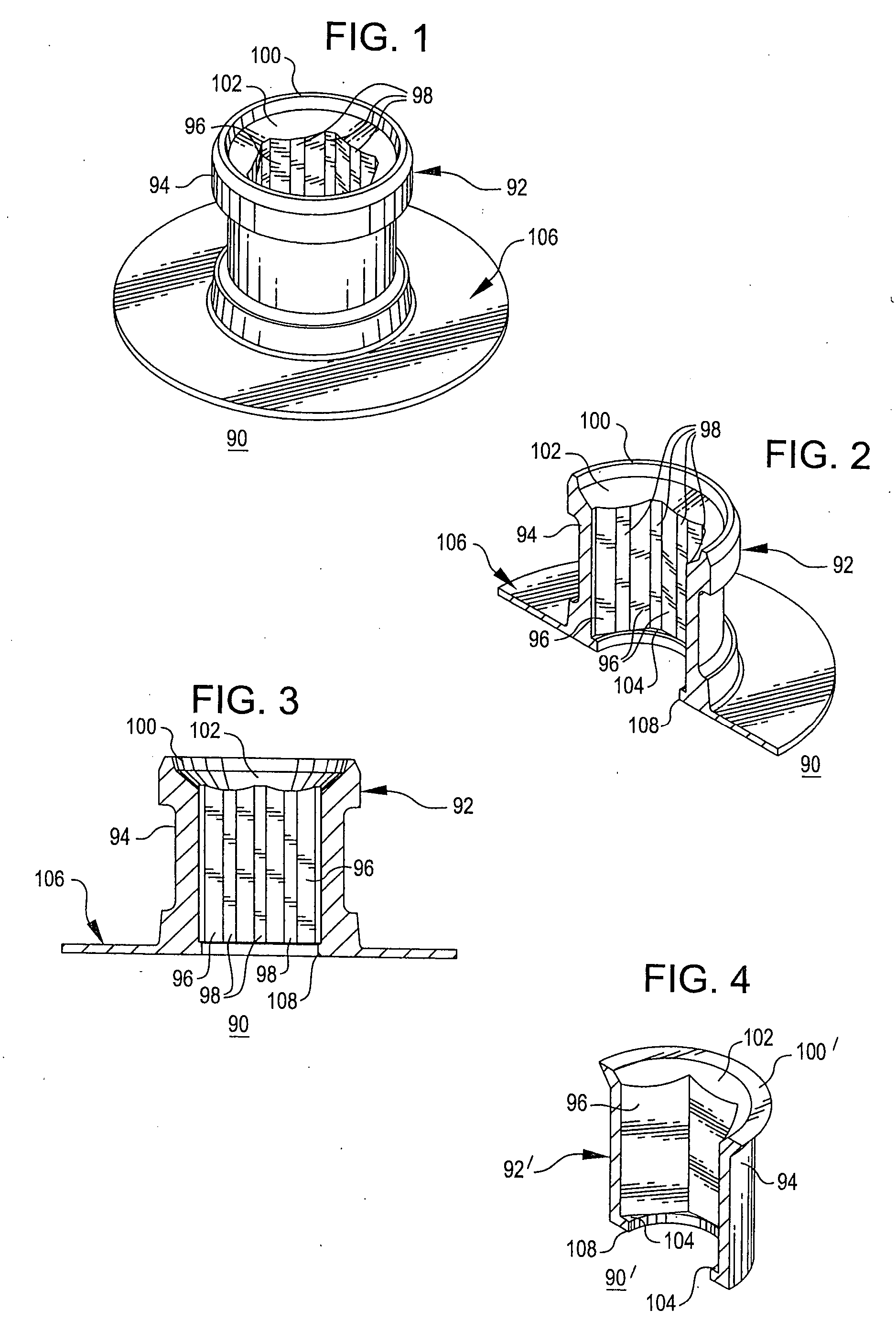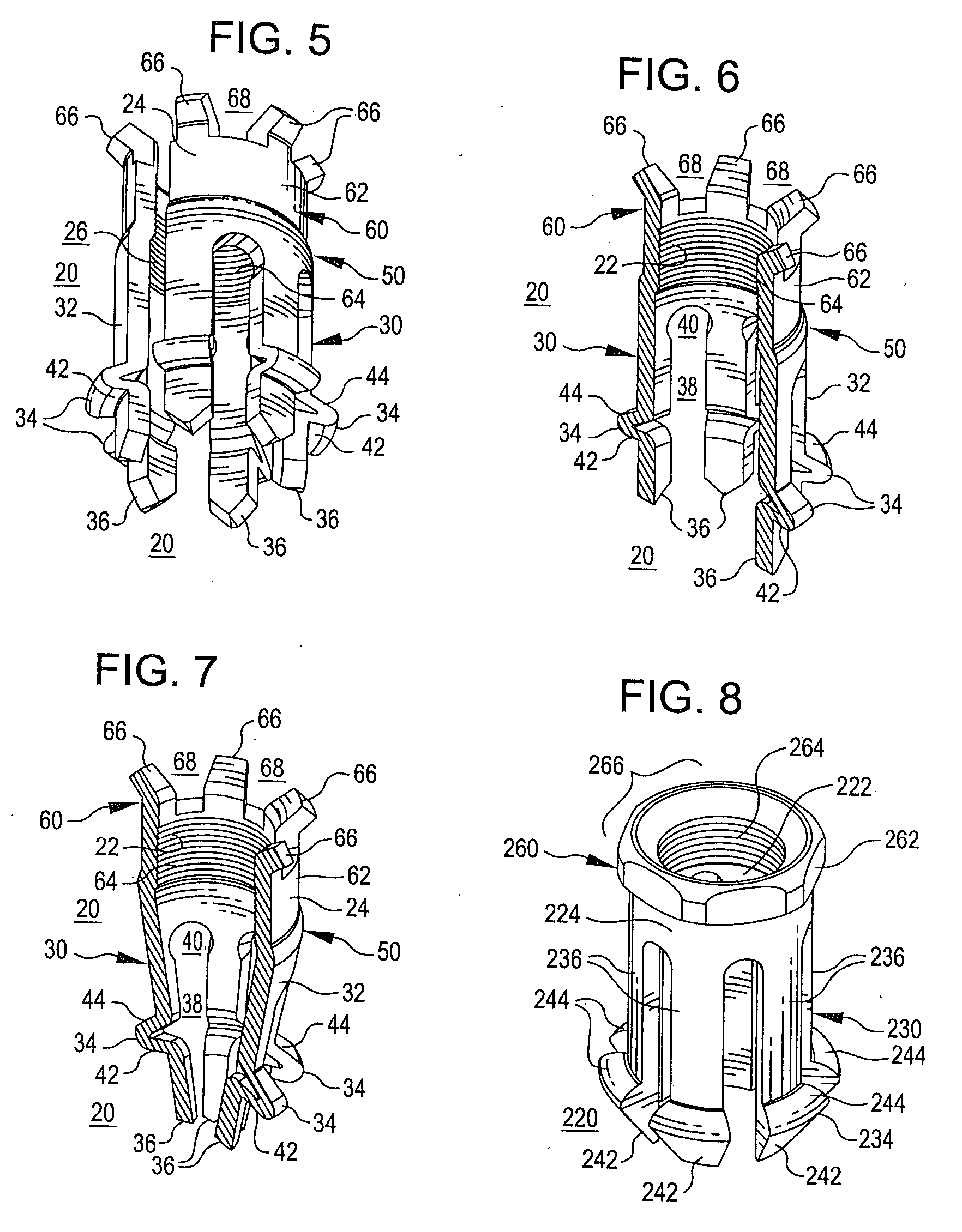Expandable collet anchor system and method
a collet and collet technology, applied in the direction of screws, threaded fasteners, manufacturing tools, etc., can solve the problems of time-consuming and labor-intensive riveting installation, requiring expensive specialized equipment, and subsequent tightening of the floor panel to the underlying structur
- Summary
- Abstract
- Description
- Claims
- Application Information
AI Technical Summary
Benefits of technology
Problems solved by technology
Method used
Image
Examples
Embodiment Construction
[0055] Turning then to the several Figures wherein like numerals indicate like parts, and more particularly to FIGS. 5-7, a first embodiment of a collet body is shown. Unless otherwise noted, any described collet body or collet system is intended to secure at least two objects together, i.e., fasten at least two objects together, each having a generally circular aperture, to form a single attachment. An exception to this premise relates to FIGS. 17-22 wherein a rectilinear aperture is preferred and FIGS. 23-28 wherein a stud is fixedly attached to one object and operates to anchor a second object thereto.
[0056] Returning then to FIGS. 5-7, collet body 20 can be formed from any material suitable for its intended application including metals, polymers, and composites. In the illustrated embodiment, collet body 20 is formed from metal and comprises the following portions and elements: first end 30; first wall portion 32, which includes protruding portion 34 and defines fingers 36; mid...
PUM
| Property | Measurement | Unit |
|---|---|---|
| Thickness | aaaaa | aaaaa |
| Diameter | aaaaa | aaaaa |
| Surface | aaaaa | aaaaa |
Abstract
Description
Claims
Application Information
 Login to View More
Login to View More - R&D
- Intellectual Property
- Life Sciences
- Materials
- Tech Scout
- Unparalleled Data Quality
- Higher Quality Content
- 60% Fewer Hallucinations
Browse by: Latest US Patents, China's latest patents, Technical Efficacy Thesaurus, Application Domain, Technology Topic, Popular Technical Reports.
© 2025 PatSnap. All rights reserved.Legal|Privacy policy|Modern Slavery Act Transparency Statement|Sitemap|About US| Contact US: help@patsnap.com



